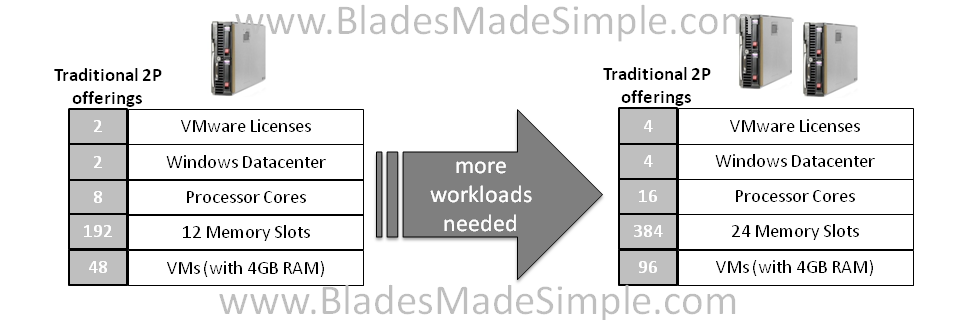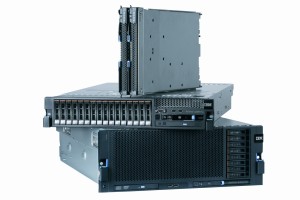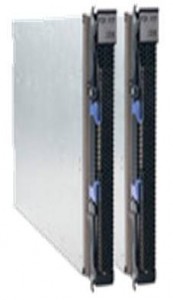Last week I mentioned NPAR as a feature in most Broadcom like the ones found in the PowerEdge MX740c blade server. I realized although NPAR is nearly a decade old, it may not be well-known by readers, so I thought I’d take a few minutes to break it down for you. Continue reading
Tag Archives: virtualization
What Workloads Are Running on Your Blade Servers?
Higher CPU core counts and faster memory speeds are expanding the use case for blade servers. In years past, a majority of users would say they use blade servers for a dense platform for virtualization. Today, I think there are more workloads than virtualization running on blade servers, but I need your help to decide if my speculation is true. Continue reading
Managing Server Hardware and VMs – You Need This Tool
If your organization has teams that are responsible for managing both the physical server hardware (rack or blade server) lifecycle and the virtual environment, there is a tool that is ideal for you. Continue reading
VMware Virtual SAN Ready Node on a Blade Server
UPDATED I recently had to determine the best option for a customer from the Virtual SAN Compatibility Guide / Virtual SAN Ready Node guide and was a bit surprised to see only a single blade server vendor listed. When it comes to choosing a server form factor, there are many reasons to choose blade servers, and several reasons not to choose them (see “5 Reasons You May NOT Want a Blade Server – April 2013.”) If you think blade servers will fit for your infrastructure needs, here are a few options to consider.
A First Look at Dell’s FX Architecture
Today Dell announced a new server architecture that combines characteristics of both rack servers and blade servers into a new architecture, known as PowerEdge FX. Today I’ll give you a first look into the platform. First off – according to Dell’s Product Development team, this platform was not designed to replace Dell’s blade server portfolio. Instead it was created to help bridge the gap between blade servers and rack servers. As you look at this new infrastructure, you may ask is it really a “blade server?” I’ve always claimed if it shared power, cooling and networking, it’s a “blade server” however I’ll let you form your own opinion. Continue reading
POLL Results: How Many NICs Do You Use for Virtualization on Your Blade Servers?
Last month I ran a poll asking “how many NICs do you use for virtualization on your blade servers” and the results may surprise you.
How Many NICs Do You Use for Virtualization?
Quick poll to see what your typical NIC design is for your virtual environment deployed on blade servers. Please take a minute to answer.
Virtualization Performance on Blade Servers
One of the industry-leading independent technology assessment service firms, Principled Technologies, just updated their site with a ton of white papers covering performance on just about any product or technology. You can check out their website at http://www.principledtechnologies.com/default.htm for the complete list, but I wanted to give you the links to their papers that cover virtualization performance on blade servers.
Dell FlexMem Bridge Helps Save 50% on Virtualization Licensing
Let’s face it. Virtualization is everywhere.
Odds are there is something virtualized in your data center. If not, it soon will be. As more workloads become virtualized, chances are you are going to run out of “capacity” on your virtualization host.  When a host’s capacity is exhausted, 99% of the time it is because the host ran out of memory, not CPU. Continue reading
When a host’s capacity is exhausted, 99% of the time it is because the host ran out of memory, not CPU. Continue reading
Announcing IBM eX5 Portfolio and the HX5 Blade Server
IBM’s Enterprise x-Architecture has been around for quite a while providing unique Scalability, Reliability and Flexibility in the x86 4-socket platforms. You can check out the details of the eX4 technology here.
Today’s announcement offered up a few facts:
a) the existing x3850 and x3950 M2 will be called x3850 and x3950 X5 signifying a trend for IBM to move toward product naming designations that reflect the purpose of the server.
b) the x3850 and x3950 X5’s will use the Intel Nehalem EX – to be officially announced/released on March 30. At this time we can expect full details including part numbers, pricing and technical specifications.
e) IBM also announced a new technology, known as “FlexNode” that offers up physical partitioning capability for servers to move from being a single system to 2 different unique systems and back again.
An observation from the pictures of the HX5 is that it will not have hot-swap drives, like the HS22’s do. This means there will be internal drives – most like solid state drives (SSDs). You may recall from my previous rumour post that the lack of hot-swap drives is pretty evident – IBM needed the real estate for the memory. Unfortunately until memristors become available, blade vendors will need to sacrifice real estate for memory.
2) As part of the MAX5 technology, IBM will also be launching a memory blade to increase the overall memory on the HX5 blade server. Expect more details on this in the near future.
Visit IBM’s website for their Live eX5 Event at 2 p.m. Eastern time at this site:
As more information comes out on the new IBM eX5 portfolio, check back here and I’ll keep you posted. I’d love to hear your thoughts in the comments below.
maryland general hospital
horror movies 2010
ny gay marriage
online grocery coupons
smith goggles


